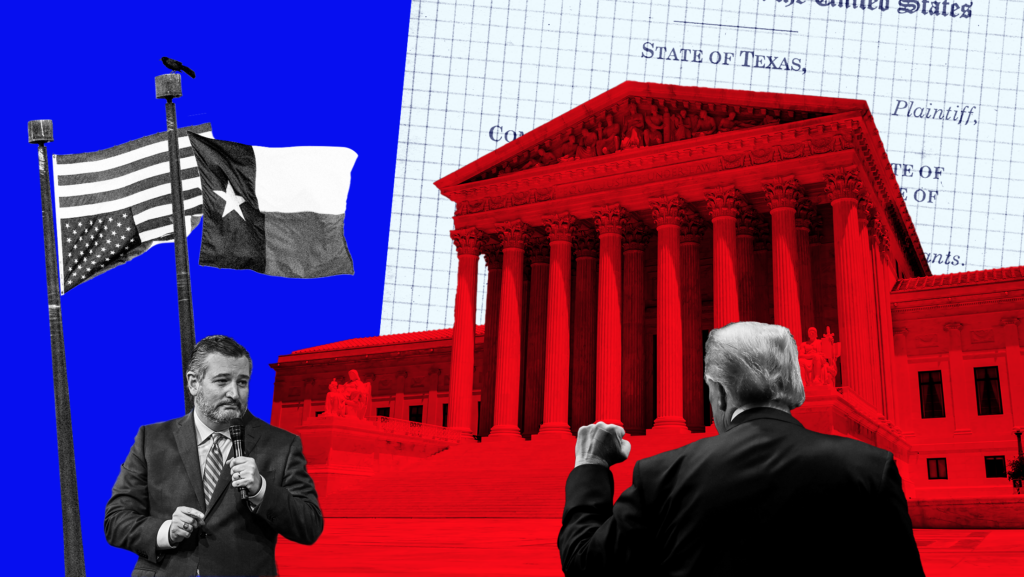The “Big One” Missing From Trump’s Indictments

A strong indictment tells a story. Prosecutors decide what goes into that story, making sure to include the information necessary to provide the roadmap for conviction. In high profile cases, indictments also shape what we believe and what we value. They help us make sense of complicated events and sort out the good guys from the bad. They identify the masterminds, the foot soldiers and the victims.
It is no surprise that the choices that special counsel Jack Smith and Fulton County District Attorney Fani Willis (D) made — which facts to include, who to indict and what crimes to charge — have already framed much of what we understand about what happened on Jan. 6, 2021, and the weeks leading up to it. Yet, I can’t help but feel like something important is missing from that story.
According to their indictments, former President Donald Trump engaged in a wide-ranging conspiracy to illegally overturn the results of a free and fair election. When that did not work, he proceeded to prevent a critical step in the peaceful transfer of power on Jan. 6, 2021. Smith’s federal indictment details dozens of separate acts Trump took in furtherance of his conspiracies to defraud the United States and to obstruct an official proceeding. In Fulton County, Georgia, Willis sets out 161 separate overt acts committed by the 19 defendants charged with participating in a racketeering conspiracy.
Even after reading these two indictments, I realized something was still missing: Trump’s audacious effort to enlist the U.S. Supreme Court in throwing out the election results in four key battleground states. At the time, Trump called the case “the big one.” If successful, this one lawsuit would have disenfranchised more than 20 million voters across Georgia, Michigan, Pennsylvania and Wisconsin and changed the results of the election.
When this lawsuit was filed on Dec. 7, 2020, it was clear this was like no other. It was filed by the state of Texas, not gadfly lawyers. It was brought in the name of the state, signed by the state’s attorney general with the support of the governor. Sen. Ted Cruz (R-Texas) volunteered to argue the case if a hearing was set.
The omission of any mention of the Texas lawsuit is a shortcoming of the two indictments.
Other than the events that took place on Jan. 6, the Texas case was the most profoundly anti-democratic act in the post-election period. The use of state resources and official imprimatur to traffic in false information and overturn an election was a precursor to the fake elector schemes and Jeffrey Clark’s attempt to use government resources to overturn Georgia’s election results.
Most importantly, the Texas case galvanized the Republican political and legal community behind Trump’s plan to steal the election. Within two days, 17 other states — represented by their state’s lawyers — filed a legal brief in support of Texas.
Not to be outdone, 106 Republican members of Congress filed their own brief, also supporting Texas. Several of the members were from the states being sued by Texas. Republicans were willing to call into question the legitimacy of their own elections to join forces with a failed one-term president seeking to overturn a free and fair election.
Trump seized the importance of the Texas case as an organizing effort for the certification showdown set for Jan. 6. According to an email, Trump personally solicited the amicus brief from the members of Congress and made clear that he would review the list of who signed onto the brief. Among those who signed was now-Speaker of the House Kevin McCarthy (R-Calif.).
Before there was violence, Trump used this case to lock congressional Republicans into his conspiracy to overturn the election on Jan. 6. But that wasn’t his only connection to the lawsuit. When he filed his own brief in support of the Texas lawsuit, Trump was represented by his co-conspirator, John Eastman. The arguments Eastman made before the Court eerily mirror the rationale he concocted to pressure then-Vice President Mike Pence to ignore the results of the Electoral College.
The omission of any mention of the Texas lawsuit is a shortcoming of the two indictments. Both indictments reference false statements made in another case Trump filed in Georgia, yet they ignore the case brought before the Supreme Court. One can’t help but wonder if this was a deliberate effort to avoid bringing the high court into the already closely scrutinized criminal case.
More likely, in the massive amount of evidence available to them, the prosecutors may have decided that the Texas case was simply unnecessary to secure a conviction. That is, after all, the purpose of an indictment. The prosecutors likely thought that a recorded phone call, secret fake elector meetings and White House fights in the Oval Office were far more vivid and intriguing than one more failed court case.
Whatever their reasons, we are worse off for it.
The Texas lawsuit was a state-sponsored legal attack on our free and fair election. It had the potential to irreparably damage the legal and political system. It was planned and executed by Trump-aligned lawyers using the power of the state. To understand the enormous forces tearing our country apart in the run-up to Jan. 6, you need to include the weight of a lawsuit brought in the Supreme Court by 17 states directly against four others.
The Texas lawsuit was part of the scheme that nearly toppled our democracy. In two criminal indictments spanning hundreds of separate overt acts and even more background facts, there was room for it to be mentioned.